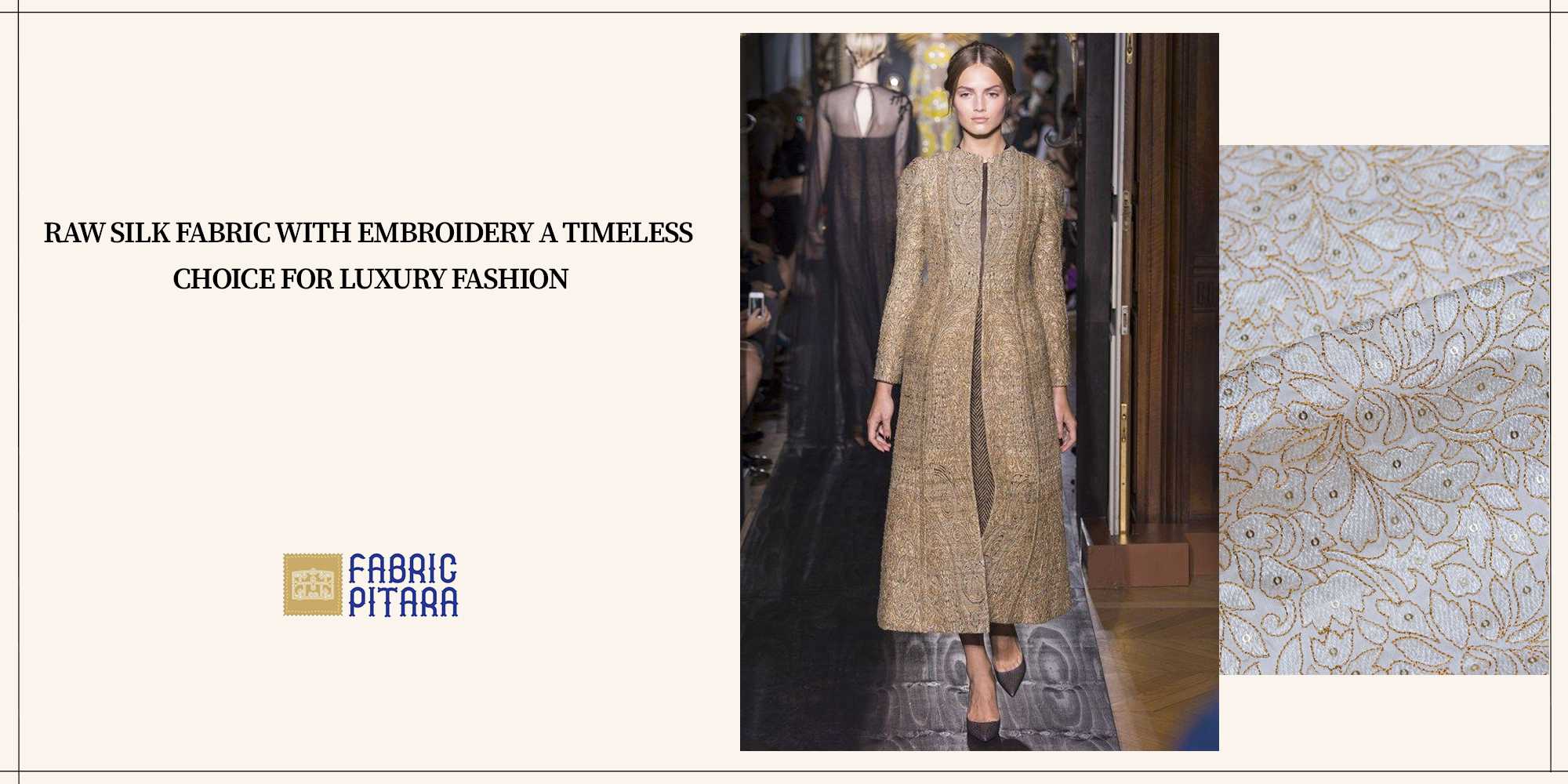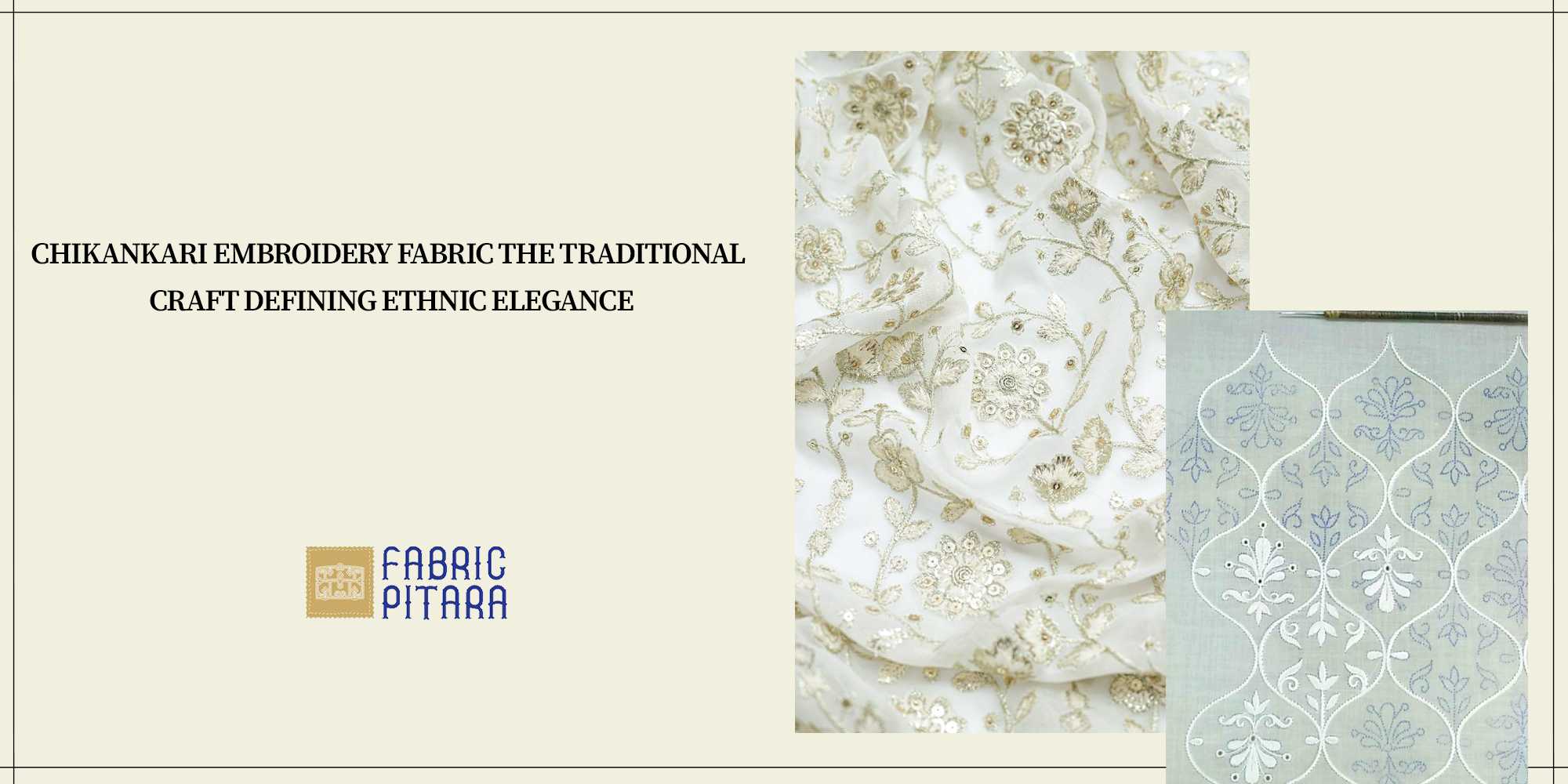![[Stylish woman in a vibrant red outfit, wearing a wide-brimmed hat and sunglasses, surrounded by colorful accessories.]-[fabricpitara]](https://fabricpitara.com/media/magefan_blog/realty-free-image-uhd-wallpaper_1023251-101746.jpg)
India is a pot where tradition and modern style mix the finest in this fast-paced world of fashion. This trend of fusing ethnic materials with Western fashion is an example of this fusion in action. The best elements of these two worlds are united in this creative fusion: the richness of Indian textiles is paired with contemporary silhouettes and aesthetics that are popular on high-end runways and in regular street wear. The blog will assist readers in comprehending this fascinating journey, from the trend's inception to its diverse expressions and growing appeal among fashionistas.
![[A woman wearing a pink traditional outfit stands gracefully, looking down, with a potted plant beside her against a modern, dark backdrop.]-[fabric]](https://fabricpitara.com/media/wysiwyg/ghfuhl1_61__2.png)
![[A woman wearing a pink traditional outfit stands gracefully, looking down, with a potted plant beside her against a modern, dark backdrop.]-[fabric]](https://fabricpitara.com/media/wysiwyg/ghfuhl1_61__2.png)
Origins of Fusion Fashion
Fusion fashion isn't a new phenomenon in India. The us of a has a large history of cultural exchange from the Indo-Persian influences of the Mughal technology to the effect of the West on Indian attire through the colonial duration. It is, however, the kind of marinating of Western developments with ethnic fabrics that started taking shape and is a cutting-edge wave that started picking up within the overdue twentieth century impetus furnished by means of designers who desired an identity for Indian style globally.
Designers like Manish Arora, Sabyasachi Mukherjee, and Anita Dongre have been the forerunners in making this fashion very famous. They married Western silhouettes with traditional Indian fabric inclusive of silk, cotton, and khadi without a doubt well to come up with collections that worked fabulously in India and with global audiences too. Their paintings divinely paved the way for a brand new generation of designers who keep to push the boundaries of creativity.
The Appeal of Ethnic Fabrics
The Appeal of Ethnic Fabrics
India is quite proud of its history in textiles. Each distinct regional type and variety of fabric carries with it its own cultural value and traits. For instance, due to its gloss and feel, silk is a fabric that is associated with luxury. Thus, it finds its place when someone want to wear it to big ceremonies or special days like weddings.
Cotton is a renowned fabric that can be used for anything from elaborate sarees to casual wear because it is breathable and pleasant.
Khadi: The hand-spun cloth speaks for itself in terms of sustainability and legacy, and it is symbolic of India's struggle for independence.
Chanderi: This sheer, translucent fabric from MP features elaborate designs and a shiny sheen.
Banarasi: This fabric, which has its origins in Varanasi, is renowned for its elaborate brocades and silver or gold zari embroidery. These textiles serve as the basis for fusion fashion. They create a vast canvas that allows one to experiment with western styles.
![[A red-haired woman dressed as a cowboy stands confidently at sunset, wearing a hat and poncho, with barns behind.]-[fabricpitara]](https://fabricpitara.com/media/wysiwyg/portrait-photorealistic-female-cowboy-sunset_23-2151469196_1__2.jpg)
![[A red-haired woman dressed as a cowboy stands confidently at sunset, wearing a hat and poncho, with barns behind.]-[fabricpitara]](https://fabricpitara.com/media/wysiwyg/portrait-photorealistic-female-cowboy-sunset_23-2151469196_1__2.jpg)
Innovative Fusion:
Replicating western silhouettes from traditional textiles is one of the most common ways that Western fashions have been mixed with ethnic fabrics. Consequently, high-waisted khadi handloom pants or a refined Banarasi silk suit jacket were constructed. These offer a welcome contemporary twist while maintaining the fabric's elegance and wow factor.
Ethnic Motifs on Western Garb:
Adding ethnic needlework and motifs to Western clothing is any other captivating manner. Imagine, for example, a undeniable white blouse with sensitive Chikankari paintings on it or a classic denim jacket with stunning Phulkari sewing. The exact forte and cultural person this technique adds to the maximum popular normal Western garb is what makes it so extremely good.
Mix and Match:
The idea of mix and match also forms the foundation of fusion fashion.You can put on a saree with a crop top and shoes, or you may put on a traditional Indian kurta with jeans.People find it simpler to express their individuality while incorporating elements of their cultural background thanks to this fusion.
![[A woman in a floral dress and denim jacket smiles, holding her shoes on a beach, with a rustic background.]-[fabricpitara]](https://fabricpitara.com/media/wysiwyg/stylish-woman-summer-dress-vacation-walking-beach-with-shoes-hand_285396-6607_2.jpg)
![[A woman in a floral dress and denim jacket smiles, holding her shoes on a beach, with a rustic background.]-[fabricpitara]](https://fabricpitara.com/media/wysiwyg/stylish-woman-summer-dress-vacation-walking-beach-with-shoes-hand_285396-6607_2.jpg)
Popularity of Fusion Fashion
Celebrity Endorsements
One such trend that has flourished these days is the amalgamation of western developments with ethnic fabrics. And a large a part of that is going to celebrities and influencers, who have been proponents of this trend. More often than not, Bollywood celebrities which include Deepika Padukone, Sonam Kapoor, and Priyanka Chopra had been noticed in fusion attires numerous times, growing new benchmarks of fashion. Their style inspires tens of millions and drives the popularity of this fashion among the masses.
Runway to Real Life
This idea of fusion fashion has also been fostered via runway events and fashion shows. Designers depict India as a country with the best textiles at the forefront of global fashion, showcasing their inventiveness on international stages. As a result, fusion fashion is progressively making its way into regular clothing and is no longer limited to haute couture.
Sustainable Fashion Movement
With the advent of sustainability in fashion, interest in this fusion trend has expanded even further. People have become greater environmentally involved, which has an impact on the garb they wear, and they are gravitating towards moral and sustainable fashion.Since most ethnic fabrics are created by hand utilizing age-old techniques, they are ideal for such an ethos. Eco-friendly clothing may be stylish and high fashion when it incorporates these materials with modern designs and styles.
Challenges and Future Prospects
The blending of Western fashions with ethnic fabrics is widely praised and celebrated, but there is a cost involved. Cultural misappropriation is a serious issue since it can occur when traditional elements are used without any consideration or respect for their historical significance. Designers and buyers must use caution to ensure that cultural heritage is protected and not harmed.
India's hybrid fashion future is only getting started. We may expect to see even more exciting and varied combinations of Indian cultural materials with Western designs as long as designers keep experimenting and searching for fresh inspiration. This new trend will not only honor India's rich textile history, but it will also demonstrate that the country can adapt to change and thrive in the current global fashion scene.
Conclusion
This merging of Western styles with traditional textiles is only one aspect of India's fashion industry's vibrant, rising dynamic. The combination of Western ethic elements creates a distinctive and captivating fashion statement, whether it's a silk saree paired with a denim jacket or a khadi skirt paired with a smart blouse. This fusion of the conventional and present day gives limitless possibilities for creativity and self-expression. As this fashion maintains to grow, it'll absolutely make an impact at the style industry—now not just in India, but all over the global. Take it easy and embrace the diversity; let your look shout the many cultures that have been combined to create modern Indian fashion.







